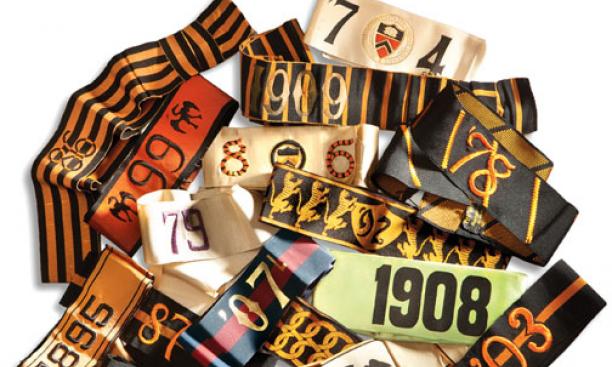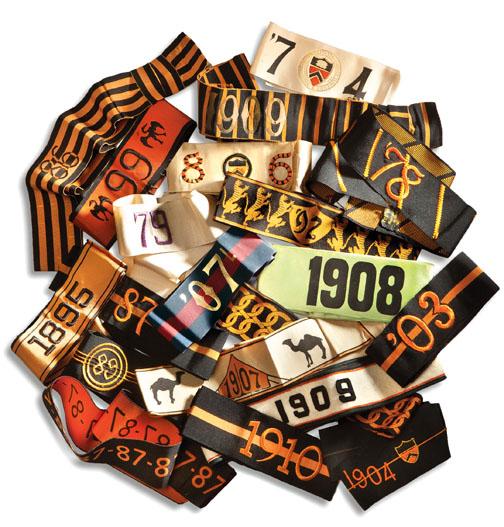

What: As campus fashion grew tony and buttoned-down in the 1890s, the zany hats of earlier years (including black caps with 2-foot-long pointed orange brims) gave way to more austere styles — brightened with hatbands. These colorful grosgrain silk ribbons, inscribed with class numerals, were blazons of status. Lowly freshmen weren’t allowed to wear them.
To win admission to top Prospect clubs, sophomores joined “hat lines” — groups of friends distinguished by prep-school-color hatbands (shown here with Reunions bands). Success or failure in life hinged on “making a hat line.” “Between the [eating] club man and the non-club man ... there is the sharpest of all distinctions, painfully signalized by the brilliant hatband the club men wear,” a visitor noted. “It is a manifest case of sheep and goats.”
Appalled by the growth of campus snobbery, Princeton president Woodrow Wilson 1879 decried “the evils of hatbands.” He banned hat lines in 1907: “There shall be no distinction made between the clubs by the color or form of the spring hats.” Thus the age of colorful ribbons ended.
Where: Collection AC53, Mudd Manuscript Library
